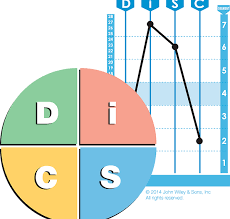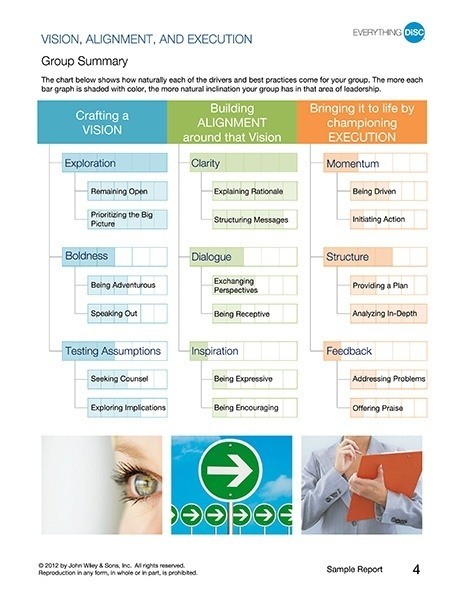DISC est un excellent outil pour en savoir plus sur vous-même, sur la façon dont vous percevez les autres, sur la façon dont ils vous perçoivent et sur la manière d’améliorer l’efficacité de vos relations. Malheureusement, il existe des mythes à propos de disc, qui rendent son utilisation potentiellement moins efficace.
Les Mythes DISC les plus communs
Mythe : disc est identique à DiSC

La vérité est qu’il existe de nombreuses versions disc sur le marché. La raison en est que ni Marston ni le professeur John Geier, lorsqu’il a finalisé la première évaluation disc disponible sur le marché, n’ont protégé la propriété intellectuelle. John Geier a vendu sa société Performax à Carlson Learning, aujourd’hui Wiley. Pour cette raison, il est vrai de dire que Wiley a publié l’évaluation disc d’origine.
La première évaluation disc, développée par Walter Vernon Clarke, affinée par John Cleaver, complétée et testée par le professeur John Geier de l’Université du Minnesota, comportait 24 questions à choix forcé (4 choix, entre des affirmations « le plus, ou le moins, comme moi »). Cette version a été vendue à d’autres éditeurs et est toujours utilisée dans de nombreuses versions disc. Le questionnaire date des années 70 et sa précision n’est pas celle de la version actuelle.
Mythe : disc mesure votre personnalité
DiSC mesure des traits de comportement de surface, ce n’est pas la même chose que la personnalité. La personnalité est bien plus complexe que ce qui est mesuré par DiSC ou tout autre outil d’évaluation. Certains outils utilisés par des psychologues ou des recruteurs s’en approchent un peu, tels que NEO-PI, 16 PF ou Hogan. On les appelle des évaluations Big 5, car ils mesurent 5 traits de personnalité, chacun subdivisé en 6 facettes. Est-il préférable de mesurer les traits de personnalité que les traits de comportement de surface? Non, tout dépend de ce que vous avez l’intention de faire avec votre évaluation et du résultat que vous souhaitez obtenir en l’utilisant. Pour nous, DiSC est un outil d’accompagnement et en aucun cas un outil de jugement.
Mythe : disc n’est pas précis

Il existe des évaluations disc qui semblent moins précises. Pourquoi? Pour vous assurer que votre version de disc est précise, le mieux est de consulter les travaux de recherche et validation. Voici ce que nous savons: si vous prenez la version originale de l’évaluation disc (système de profil personnel version 6.1, à 4 affirmations sur 24 questions) datant de 1972, les cotes de fiabilité varient de 0,36 (C plus) à 0,79 (D plus). C’est médiocre et cela explique pourquoi Wiley a entrepris en 1994 des recherches approfondies pour revoir, normaliser et re-valider l’instrument.
Le résultat de cette recherche fut le Personal Profile System 2800, qui date aujourd’hui de plus de deux décennies. Depuis lors, des recherches et des validations approfondies ont abouti à des tests adaptatifs informatisés représentés par l’évaluation Everything DiSC. Les scores de précision sont bien meilleures aujourd’hui, comme vous pouvez le lire dans le rapport de recherche le plus récent à ce propos.
Mythe : disc existe depuis longtemps, pas besoin de mettre à jour l’outil
En vérité, tout change autour de nous et DiSC doit suivre les tendances. Les mots utilisés il y a 40 ans n’ont plus le même sens. Les techniques d’évaluation ont également évolué. Everything DiSC utilise 80 questions, avec une technologie de test adaptatif, qui peut déterminer si les réponses fournies sont statistiquement incohérentes. Lorsque cela se produit, plusieurs questions de types différents sont présentées au répondant en temps réel, afin de déterminer avec plus de précision ses préférences personnelles.
Mythe : disc mesure votre comportement naturel et adapté
 Aux débuts de disc, Walter Clarke et John Cleaver utilisaient « l’outil d’analyse vectorielle », consistant en un jeu de cartes décrivant le comportement d’une personne, « telle qu’elle est vue par elle-même et par les autres ». William Moulton Marston a également mentionné le « comportement naturel et adapté » dans ses écrits. Cependant, depuis que John Cleaver a conçu la première évaluation en 24 questions, il n’y a pas eu de question spécifique mesurant un comportement « adapté ou naturel ». Cela fut établi par Wiley à l’occasion de recherches approfondies dans les années 1990 et par la British Society of Psychology vers 1994. Cela ne signifie pas que les gens n’adoptent pas de comportement « naturel » ou « adapté », cela signifie simplement que les questionnaires d’évaluation de 24 items et leur équivalents plus récents ne sont pas conçus pour mesurer cela spécifiquement.
Aux débuts de disc, Walter Clarke et John Cleaver utilisaient « l’outil d’analyse vectorielle », consistant en un jeu de cartes décrivant le comportement d’une personne, « telle qu’elle est vue par elle-même et par les autres ». William Moulton Marston a également mentionné le « comportement naturel et adapté » dans ses écrits. Cependant, depuis que John Cleaver a conçu la première évaluation en 24 questions, il n’y a pas eu de question spécifique mesurant un comportement « adapté ou naturel ». Cela fut établi par Wiley à l’occasion de recherches approfondies dans les années 1990 et par la British Society of Psychology vers 1994. Cela ne signifie pas que les gens n’adoptent pas de comportement « naturel » ou « adapté », cela signifie simplement que les questionnaires d’évaluation de 24 items et leur équivalents plus récents ne sont pas conçus pour mesurer cela spécifiquement.
Mythe: « pas besoin du graphe III, les graphes I et II seuls sont plus précis »
 Tout d’abord, Wiley n’utilise plus les graphiques I, II et III (ils étaient utilisés dans DiSC Classic), depuis l’avènement de la nouvelle génération d’instruments Everything DiSC. Au lieu de cela, nous utilisons un cercle, qui constitue une carte, avec 8 priorités autour. Ce nouveau modèle remonte aux origines de DiSC, où le modèle était dessiné sur un cercle. Alors pourquoi tant d’histoires au sujet des graphes I, II et III? Parce que certains affirment que le graphique III est plus précis et d’autres prétendent que vous ne devriez pas utiliser le graphique III, car les graphiques I et II, « qui mesurent le comportement naturel et adapté» (selon leurs dires) sont bien plus efficaces.
Tout d’abord, Wiley n’utilise plus les graphiques I, II et III (ils étaient utilisés dans DiSC Classic), depuis l’avènement de la nouvelle génération d’instruments Everything DiSC. Au lieu de cela, nous utilisons un cercle, qui constitue une carte, avec 8 priorités autour. Ce nouveau modèle remonte aux origines de DiSC, où le modèle était dessiné sur un cercle. Alors pourquoi tant d’histoires au sujet des graphes I, II et III? Parce que certains affirment que le graphique III est plus précis et d’autres prétendent que vous ne devriez pas utiliser le graphique III, car les graphiques I et II, « qui mesurent le comportement naturel et adapté» (selon leurs dires) sont bien plus efficaces.
Historiquement, le Graph III est le résultat obtenu en additionnant Graph I et Graph II.

Pourquoi était-ce fait ainsi ? Parce que l’instrument (24 questions à choix forcé) n’était pas précis, et le rapport de recherche rédigé en 1996 le prouve. En mettant à jour les questions existantes et par l’ajout de 4 nouvelles, Wiley a fortement amélioré la précision de l’instrument (devenu Personal Profile System 2800, puis plus tard DiSC Classic II), qui fut le profil DiSC de choix pendant des décennies.
Faire face aux mythes disc
Comme vous pouvez le constater, plusieurs mythes entourent disc et les différents arguments de vente reflètent cette diversité. Il en existe un original et un instrument DiSC validé par la recherche. Wiley est l’éditeur qui publie le plus de recherches dans le monde disc. Découvrez les évaluations DiSC, le kit de facilitation, les solutions d’apprentissage étendues et les rapports complémentaires.



